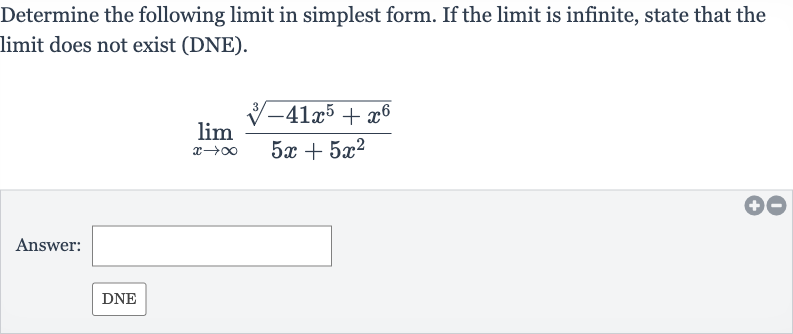Full solution
Q. Determine the following limit in simplest form. If the limit is infinite, state that the limit does not exist (DNE).Answer:
- Factor out highest power: We are given the limit: First, we will factor out the highest power of in the numerator and denominator to simplify the expression.
- Factor out : In the numerator, the highest power of is , so we factor out of the cube root.
- Factor out : In the denominator, the highest power of is , so we factor out.
- Rewrite with factored terms: Now we rewrite the limit with the factored terms: \lim_{x \to \infty}\left(\sqrt[\(3]{x^{}(-\frac{}{x}+)}\right)/\left(x(+x)\right)
- Simplify cube root: We can simplify the cube root of to because .
- Divide by : Now we divide every term by to simplify the limit further.
- Evaluate the limit: As approaches infinity, approaches and approaches .
- Evaluate the limit: As approaches infinity, approaches and approaches .
Now we can evaluate the limit:
More problems from Power rule
QuestionGet tutor help
QuestionGet tutor help
QuestionGet tutor help
QuestionGet tutor help
QuestionGet tutor help

